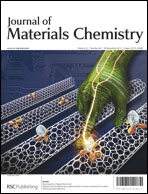PDMAEMA-b-polysulfobetaine brushes-modified ε-polylysine as a serum-resistant vector for highly efficient gene delivery†
Abstract
Serum stability is one of the key factors influencing the transfection efficiency of cationic vector-mediated gene delivery in vivo. In this work, we used an atomic transfer


 Please wait while we load your content...
Please wait while we load your content...